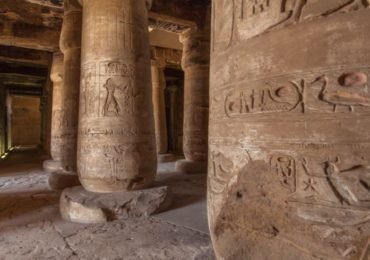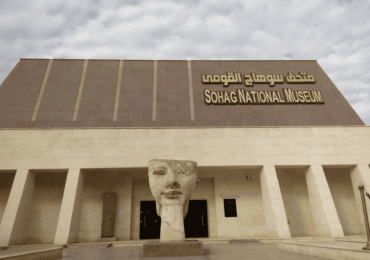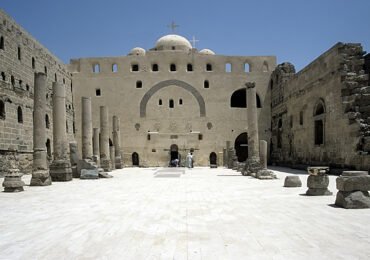Sohag is one of the governorates of Upper Egypt which has a deep-rooted history and heritage which extends to the ancient ages. Where Abydos, now located in Markaz Belina, was the capital of Egypt all through the eras of the first four Pharaonic Dynasties. Also, the ancient city of This (Thinis) or El-Tina, the village of mud or clay just north of Abydos, was home and headquarters of the first Pharaoh of Egypt, known in history as Mina or Narmer who managed to unify Egypt.
During the Islamic era, the whole area of the governorate had been a part of Egypt under the Ottoman Empire. Until it became a separate province called Upper Egypt or Girga and its capital was Girga city. Later, with the rule of Muhammad Ali, Egypt was divided into directorates. However, Girga Directorate kept its name until 1960. When the capital was moved to Sohag and the name of the governorate changed accordingly.
Sohag Facts
Capital: Sohag City.
National Day: The 10th of April is the National Day of the governorate on which it celebrates the victory of the Egyptian resistance troops on the French troops in Johaina Battle in 1799.
Emblem: It shows the head of King Mina, who unified Upper and Lower Egypt, coronated by a crown that symbolizes this unity.
Location: Sohag is bordered by Assiut governorate in the north, and by Qena governorate in south. By the Red Sea governorate in east and by the New Valley governorate in west. It extends for 125 km along the Nile River and is 467 km away from Cairo.
Climate: It is characterized by a dry desert climate, where the temperature is high in summer and moderate in winter.
Area: It covers a total area of 11218.10 km2, equivalent to about 1.1% of the total area of Egypt.
Population: Its population is estimated at about 4,603,861 million (January 2015), representing about 5.2% of the total population of Egypt.
Things to do in Sohag
Sohag is a treasure trove of history and cultural wonders offering an array of captivating activities. From exploring the ancient Abydos Temple and the Red Monastery to immersing yourself in vibrant local markets, there’s no shortage of unforgettable things to do in Sohag.
Temple of Seti I in Abydos

Plan your tour: Tour To Dendera Temple And Abydos Temple From Luxor
The temple is entered from the northeast, through a largely destroyed first pylon. Which leads to the ruins of the first and second open courtyards built by Ramesses II. Who is depicted on the portico battle scenes of Ramesses II and on the southeast wall of the first courtyard depictions of the battle of Qadesh. Beyond, originally with seven doorways but now only entered through the central one, is the first hypostyle hall, also completed by Ramses II. Twenty-four papyrus cluster columns, with bud capitals, supported the partly destroyed roof. Reliefs depict the pharaoh making offerings to the gods and preparing the temple building.
Sohag National Museum

The museum includes more than 945 artifacts from different eras. It is built on an area of approximately 8500 square meters, at a cost of 72 million Egyptian pounds. The museum consists of the main entrance and two research rooms. As well as two artificial lakes with fountains. In addition to seven big archaeological statues and some models of modern art as well as gardens.
The museum includes main hall and 6 show rooms. So that, the first hall displays various information about the kings and important personalities. Every showcase of a museum displays how the ruling king became the center of the state for thousands of years. This appears through the repetition of the name of the ruler or king, not only on his statues or His temple or cemetery. But also appears on other artifacts belonging to the figures who held many public offices in the state.
You maybe interested in this tour: Egypt Hidden Gems In 15 Days By Land
The first room includes a set of cards made of ivory, as well as clay seals. Its second room sheds light on the Egyptian family, especially in Upper Egypt, and explains the role of the Egyptian woman in the family. While the third room highlights the extent of the ancient Egyptian’s concern for health, as it displays the tools of the ancient Egyptian kitchen.
Akhmim
Akhmim lies on the east bank of the Nile River, above Sohag on the west bank. Extensive necropolises dating from the 6th dynasty (c. 2325–c. 2150 BCE) until the late Coptic period reveal the site’s antiquity. The name apparently derives from the pharaonic Khent-min and Coptic Khmin. Its deity was Min, in Hellenistic times identified with Pan, whence the name Panopolis, meaning “city of Pan.” Also referred to as Chemmis or Khemmis. It was the capital of the 9th, or Chemmite, nome (department) of Ptolemaic Upper Egypt.
Linen weaving is cited as an ancient industry there by the Greek geographer Strabo (born c. 63 BCE). It is thought that Tiye, the mother of Akhenaten, had extensive estates in the area. Which flourished as the capital of the 9th Upper Egyptian nome in the Ptolemaic Period, when it was known as Khemis. The 18th-dynasty pharaoh Ay (reigned c. 1323–19 BCE) and the 5th-century CE Greek poet Nonnus were born at Akhmīm. The Coptic dialect once spoken in the area had an important literature.
In the Islamic period it became a provincial capital under Faṭīmid caliph al-Mustanṣir (11th century CE). While in the 18th century it was incorporated into the former province of Girga, and the town was sacked during the Mamlūk civil wars.
The modern town is a market and processing centre for cereals, sugarcane, dates, and cotton. Manufactures include textiles, clothing, pottery, and bricks; the ancient weaving tradition has been revived as well. An electrical transformer station started operation in 1980.
Temple of Akhmim

The queen who stands 11m tall, wears a close-fitting pleated robe and is crowned with a modius (head-dress), decorated with serpents and the double-feathers of the ‘God’s Wife of Amun’. The open-air museum also contains a beautiful Roman statue of Venus (Isis). As well as many stelae and architectural elements form the surrounding structures. There are also some large inscribed blocks from el-Amarna which were probably re-used in the later temple building.
The Graeco-Roman temple was dedicated to Min and Triphis (Repyt), the goddess who was his consort at Akhmim. Apparently the large temple, which was described as similar in style to the Temple of Edfu, was still in good repair until the 14th century, when it was dismantled to be used as building material. Beautifully decorated stonework and two colossal statues in the temple of Min were mentioned by Herodotus in his ‘Histories’.
Temple of Ramses II in Akhmim
More recent excavations in the town have uncovered yet another temple. Close to the Graeco-Roman site, beneath a modern cemetery. This is a temple built by Rameses II, possibly his largest temple yet found. A ruined colossal statue of Rameses II (probably one of a pair) lies partly buried at what is thought to be the entrance of a temple once known as ‘The Birba’ which is referred to in Coptic and Arabic literature.
The necropolis at Akhmim has never been systematically excavated. Although recent discoveries include five tombs dating to the Old Kingdom where a number of sarcophagi and plaques have been found.
Coptic Akhmim
During the period of Christian, Coptic Akhmim was written in Sahidic Coptic: Shmin/Kmin/Kmim, which was likely pronounced as Khmin or Khmim. Since a very early date, monasteries have lived in this area. The Archimandrite Shenouda (348–466) was a monk in Athribis, near Akhmim. Several years ago, in the neighborhood of Akhmim, Nestorius, Constantinople’s exiled former patriarch, had died in at an elderly age.
At the end of the 4th century, in Panopolis, Nonnus, a Greek poet, was born. The Catholic Church’s list of titular sees contains the bishopric of Panopolis, a suffragan of Antinoë in Thebais Prima. Le Quien mentions among the Panopolis bishops, Sabinus, Menas, and Arius, a friend of Saint Pachomius who had built three sanctuaries in the city.
Archaeological diggings at Akhmim have uncovered various Christian manuscripts, including fragments of the Book of Henoch, the Gospel, the Apocalypse of Peter, the Acts of the Council of Ephesus, and many other Christian inscriptions.
White Monastery

Red Monastery
 The Red Monastery in Sohag, is a Coptic Orthodox monastery founded in the fourth century AD by Saint Psoi. It is located about two and a half miles north-west of the White Monastery. Named for the red bricks that make up most of its masonry.
The Red Monastery in Sohag, is a Coptic Orthodox monastery founded in the fourth century AD by Saint Psoi. It is located about two and a half miles north-west of the White Monastery. Named for the red bricks that make up most of its masonry.
The Red Monastery is smaller than the White Monastery, but it is still an impressive complex. The main church is a basilica with a nave flanked by two aisles. The interior is decorated with a variety of figural paintings. Sculpture dating from the fifth through fourteenth centuries. Some of the most notable works include a fresco of the Virgin and Child, and a series of paintings depicting the life of Saint Psoi.
The Red Monastery is a popular tourist destination, and is known for its beautiful architecture, its well-preserved wall paintings, and its peaceful atmosphere. It is a valuable reminder of the rich history and heritage of Coptic Christianity in Egypt.
Where to eat in Sohag?
Sohag offers a delightful culinary scene, blending traditional Egyptian flavors with modern dining experiences to cater to all tastes. For authentic local cuisine, El Omda Restaurant is a must-visit, offering mouthwatering grilled meats, hearty stews, and freshly baked bread in a cozy setting. Another favorite among locals and visitors alike is Nile View Restaurant, where you can savor Egyptian and international dishes while enjoying serene views of the Nile River—a perfect spot for a relaxing meal.
If you’re looking for a casual dining experience, El Tahrir Cafeteria is an excellent choice, famous for its fresh falafel, koshary, and a range of vegetarian-friendly options. For a more modern twist, Al Horreyah Cafe combines traditional flavors with contemporary dishes, providing a welcoming atmosphere for families and friends.
Don’t forget to explore the local bakeries, where you can indulge in freshly made feteer meshaltet (Egyptian layered pastry) and basbousa (a semolina dessert). Whether you’re craving street food, fine dining, or a quick snack, Sohag’s dining spots offer a flavorful journey through the heart of Egypt.
Where to stay in Sohag?
Sohag offers a range of accommodations to suit different preferences and budgets, ensuring a comfortable stay for every traveler. For a luxurious experience, House of Life Abydos is a top choice, offering spacious rooms, excellent amenities, and proximity to the historic Abydos Temple. If you prefer a blend of modern comfort and local charm, the Sohag Grand Hotel provides a serene atmosphere, stunning Nile views, and exceptional service.
For budget-friendly options, Lotus Hotel Sohag is a popular pick, featuring clean, comfortable rooms and a convenient location near the city center. Travelers seeking a more traditional and immersive experience can opt for local guesthouses in nearby villages, where warm hospitality and authentic Egyptian culture await. No matter where you choose to stay, Sohag’s accommodations promise a relaxing retreat after a day of exploring this historic city.

